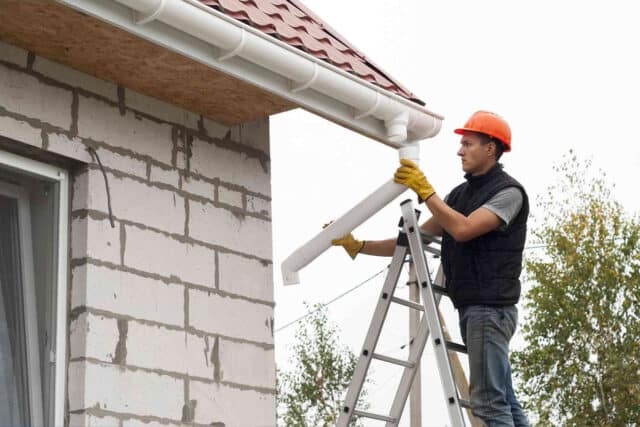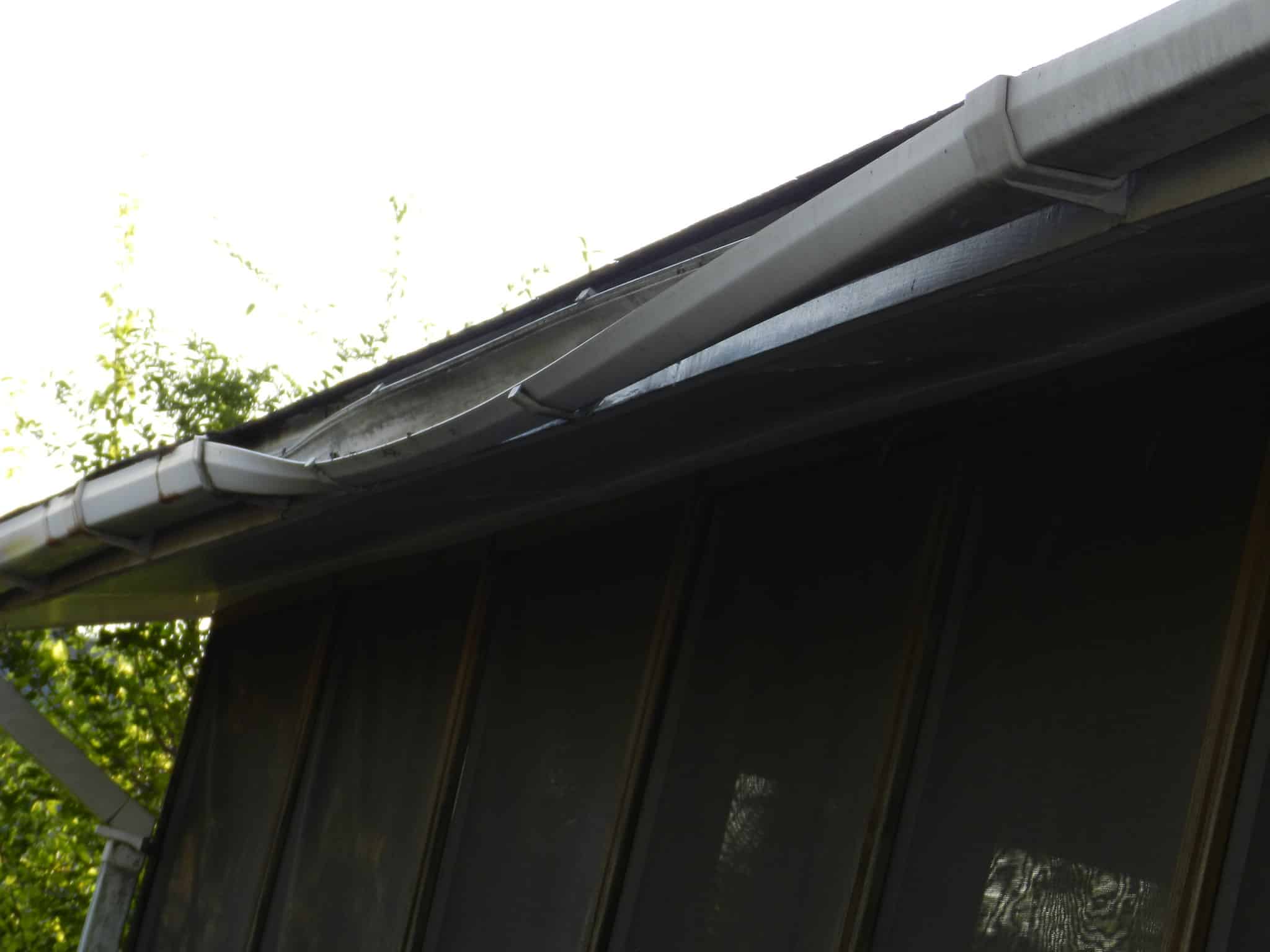A perfect roof system doesn’t just shelter you from the rain. It also safely transports accumulated water to the drains. However, that’s only possible if you have clean gutters and downspouts. Therefore, knowing how to clean downspout systems and keep them clog-free is important.
Keep reading to learn the signs of clogged downspouts, how to clean them, and the tools to use.
What Are Downspouts?
Downspouts are those vertical tubes running down the sides of your property. They are connected to your home’s horizontal gutters and work together to safely channel rainwater or melting ice water from the roof away from your home to prevent water damage.
Downspouts come in different designs and sizes. Most homes have rectangular downspouts, but circular downspouts are also common. Commercial spaces have square downspouts with far larger dimensions than residential spaces.
In terms of materials, aluminum downspouts are the most popular choice, but manufacturers also make vinyl, copper, and steel downspouts.
Whatever design or style you choose, the goal is the same: to safely transport water from your roof to the ground, reducing the risk of property damage.
Signs That Your Downspouts Are Clogged
Your downspouts are clogged if you notice any of the following:
Overflowing Gutter Near Downspout
Water is supposed to flow seamlessly from the gutter to the downspout. However, a clogged downspout will produce water buildup around the entrance, causing the nearby gutters to overflow as the accumulating water looks for an escape route.
The Whole Gutter Is Overflowing
A mere section of your gutter system overflowing is one thing, but the entire line of gutters overflowing is a whole other animal. When the water has nowhere to go, it will spill over to the sides.
There Is No Water Flowing From the Downspout
If it’s raining and there’s no water coming through the downspout, you have clogs that need urgent attention. It takes a while for downspouts to get completely clogged, so this will only happen if you haven’t cleaned them for a long time.
Leaks From Downspouts
Downspouts feature junctions where two parts meet. These are known as seams and elbows. There’s a high probability of debris getting caught around each junction if you don’t clean the system regularly. When there’s a blockage in any segment, you’ll find water leaks around it.
Downspout Splitting/Pulling Apart
If you ignore debris in the downspouts long enough, dirt compaction will follow. The downspout’s crimped seal will start pulling apart as the compaction worsens. Once your downspout is at this stage, you must replace it.
Easiest Options for Cleaning Downspouts
The easiest way to clean downspouts is to take the system apart at the seams and elbows. Downspout clogs often happen around these areas because the debris is less likely to flow through the twists and turns like water.
Opening the elbows also gives you a smaller area to clear out. It’s easier to push debris out from a quarter of the downspout system than trying to force clogs through the length of the system.
Forcing clogs through twists and turns increases the risk of breaking the seal or the material if you have vinyl or copper downspouts.
With the elbows detached, the rest of the job involves using a tool to remove all the debris inside. A garden trowel or similar tool is enough to do the job in most cases.
After removing the debris, reconnect the elbows tightly, pour water down the system with a garden hose, and monitor the flow.
Tools for Unclogging the Gutter Downspout
The garden trowel may not be enough to do the job in cases where a stubborn clog occurs further from the joints. Some of the other tools you can use include:
Plumbing Snake
This tool features a long metal cable and an auger at the tip. You can uncoil the tool inside the downspout until it reaches the clog blocking the system.
Leaf Blower
Put the nozzle of the leaf blower up into the downspout pipe and turn it on. The forceful air coming from the system might be enough to clear downspouts clogged by leaves.
Power Washer
A power washer delivers a highly pressurized stream of hot water to get rid of dirt and grime inside the downspout system. It’s the best tool to use if you’re looking at how to clear downspout systems with stubborn clogs that have defied everything else.
Alternative Options for Downspouts That Frequently Clog
Your downspouts will clog frequently if you live near trees, as fallen leaves and pines will always make their way down. Critters living around trees will also contribute to the clogging. You can avoid the constant need to clean the downspout by taking any of the following routes:
Gutter Covers
Gutter covers or gutter guards keep large debris from falling inside. The perforations will only let through water and tiny particles that will never be enough to cause clogs in your downspouts. You’ll only need to schedule periodic gutter cleaning with this option, as the gutters accumulate debris over time.
Expanding Your Downspouts
Wider downspouts won’t clog as frequently as narrower systems, if ever. However, replacing your narrow system with a wider one may also require changing the gutter system.
Drain Covers for Downspouts
Downspout drain covers block large debris from entering the downspouts. However, the drain covers get clogged fairly frequently since there’s a single trap point. You will need more frequent gutter/downspout cleaning to keep the water flowing.
Trap for Downspouts
Downspout traps are similar to drain covers but need even more regular maintenance. They are not the best option if you don’t want to climb up a ladder every other week.
Contact Our Evergreen Team
Knowing how to clean downspout systems doesn’t mean you can do the job without help. It’s always safer to call in the professionals to get the job done right the first time.
Contact Evergreen Window Cleaning for effective downspout cleaning services. We serve Greater Seattle and the surrounding areas.



